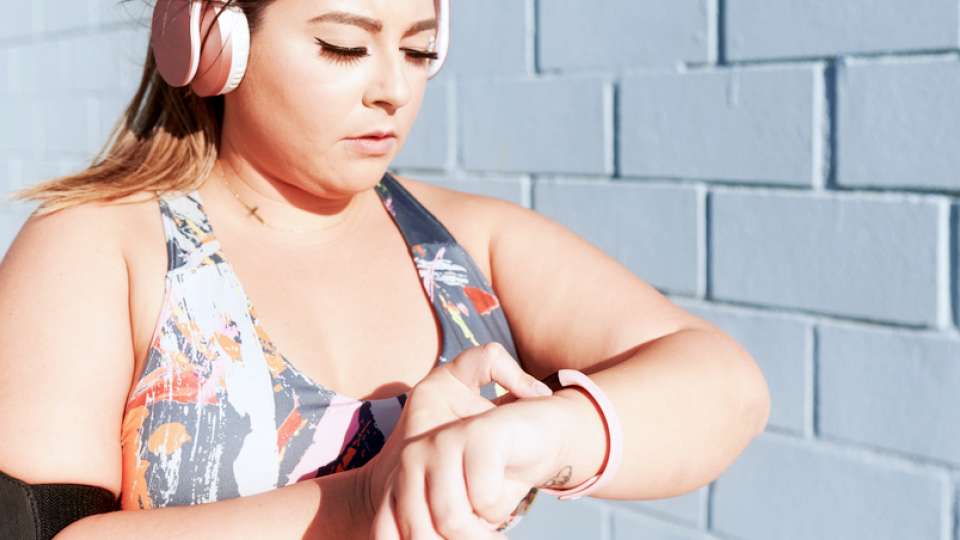
Fitness trackers have rapidly evolved over the past decade, from simple step counters to fancy gadgets that can track your heart rate, distance and fitness, play music, show phone notifications and more. (Not to mention how they’ve come a long way in terms of cuteness, too — #tbt to wearing a bulky robot on your wrist.)
But do fitness trackers reliably record your heart rate? And what health insights can tracking your heart rate provide?
Dr. Yonatan Buber, a cardiologist at UW Medical Center – Montlake, explains everything you need to know about fitness trackers as they relate to your heart rate and health.
The case for fitness trackers
Fitness trackers from a variety of brands such as Apple, Amazon, Fitbit, Garmin — the list goes on — have different features. But one common attribute is heart rate. And the reliability of their tracking is better than ever.
“From devices that were considered inaccurate and unreliable merely 10 years ago, the vast majority of heart rate trackers that are now in use — including watches, arm bands and chest straps — are regarded as accurate and are used for many purposes by different disciplines,” says Buber.
So whether you want to wear it while you sleep or sweat (or all of the above), these small devices deliver impressively accurate readings.
“The most well-validated feature of these devices is the heart rate monitoring, and when used for this purpose during sleep, rest and exercise, I do think that they are safe, accurate and very effective, and would enthusiastically recommend using them,” says Buber.
To make sure your watch is accurately tracking your heart rate, wear it just above your wrist bone and make sure it has direct contact with your skin (so that you can’t see any light shining from the sensor, but not so tight that it cuts off your circulation). Many watches use this LED light — called an optical heart rate sensor — to measure the light that is scattered by blood flow.
Tracking your heart rate during exercise and rest
So your watch is securely fastened. But can tracking your heart rate really provide health insights? You bet.
Tracking your heart rate (via a wearable tracker or by taking your pulse manually) gives you a good idea of what your resting heart rate is and helps identify what’s normal — and what’s not.
The average resting heart rate ranges between 60-100 beats per minute (BPM), and women tend to have a slightly higher resting heart rate than men.
In general, a lower resting heart rate is a sign of better conditioning. Highly trained athletes, for example, may have very low resting heart rates.
Why the variance?
“Heart rate can be affected by numerous factors, including stress, anxiety, medications, nourishment and personal fitness,” says Buber. “Sex hormones — like estrogen and testosterone — can also influence heart rate.”
During exercise, you can use your heart rate to gauge your intensity. Start by calculating your maximum heart rate. A simple calculation to find this out is by subtracting your age from 220. For example, if you’re 30 years old, your maximum heart rate is 190 BPM.
“Once your maximum heart rate is determined, the next step is to calculate your desired target heart rate zone — the level at which your heart is being exercised and conditioned but not overworked,” says Buber.
The American Heart Association recommends a target heart rate of 50 to 70% of your maximum heart rate for moderate-intensity activities, and a target heart rate of 70 to 85% of your maximum heart rate for vigorous intensity activities.
So, if you’re 30 years old with a maximum heart rate of 190 BPM, you’d aim for 95 to 133 BPM for moderate intensity activities and 133 to 161 BPM for vigorous intensity activities.
For those who don’t exercise regularly, Buber suggests starting on the lower end of your target heart rate zone and gradually building intensity over time so that you don’t overdo it.
“Excessively elevated heart rates during exercise often represent overstraining of the heart,” he says. “In these instances, it is recommended to slow down and return to the optimal heart rate range in order to avoid early exhaustion and muscle fatigue.”
By choosing the right workout intensity for you, you can more effectively exercise — and boost your heart health.
“Controlled elevation of the heart rate during exercise trains the heart to perform more efficiently,” says Buber.
Over time, it can help strengthen the heart muscle, improve your blood vessels’ ability to provide adequate blood flow to your muscles and increase the amount of blood that is being pumped out with every beat.
“In addition to the direct effects on the heart, exercising has numerous beneficial effects on general health, including maintenance of lower blood pressure and sugar levels, better bone density, improved mental alertness and mood, and lower risks of heart attacks and strokes, to name a few,” adds Buber.
Even more reason to get your sweat— and your fitness tracker — on.
Using heart rate to find health problems
Paying attention to your heart rate goes beyond measuring workout intensity. It can also help you identify health problems.
“There are several signs and symptoms which may indicate that high heart rates during exercise are not related to just overstraining of the heart,” says Buber. “These include sustained elevated heart rates that persist even after several minutes of rest.”
For example, a steady heart rate of 150 BPM that does not decrease 10 minutes into recovery warrants a trip to the emergency room.
Other symptoms that are cause for concern include a fast heart rate that feels irregular as well as heart rates that cause lightheadedness, chest pain, difficulty breathing or feeling like you’re going to pass out.
“In these instances it is recommended to ask someone to be next to you for several minutes, hydrate and see if the symptoms resolve,” says Buber. “If they don’t, and clearly if they worsen, the safest thing to do is to call 911 and be evaluated at the nearest emergency department. Some of these signs may represent abnormal heart rates — also called arrhythmias — that should be treated promptly.”
One symptom that might feel concerning, but Buber assures is typically normal, is a strong heartbeat that goes away soon after you stop exercising.
“It is not uncommon to have a sensation of very strong heart beats during exercise or during the early phases of recovery,” he says. “This is often not dangerous and tends to resolve by itself.”
But if the feeling persists or is accompanied by any of the symptoms mentioned above, it’s time to head to the emergency room.
Limitations of fitness trackers
With all the health insights they provide, there’s no doubt that these small gadgets can pack a punch. But Buber warns not to take every feature seriously.
“In newer devices, many of the manufacturers offer various built-in features that in my opinion should still be considered experimental due to lack of adequate validating data,” says Buber. “Such features include ‘intensity minutes,’ blood oxygen levels and maximal oxygen consumption (VO2).”
A note on blood oxygen levels: This popular stat, which quickly became well-known during COVID-19, can be accurately measured by finger pulse oximeters (as long as the manufacturer’s instructions are followed). Smartwatches, on the other hand, don’t have the testing to back them up.
“The technology used by some of the new smartwatches for blood oxygen level measurements is different than that used by the finger pulse oximeters. To my knowledge, there are no studies to date that compare these two methods, and thus the reads from the smartwatches are still not well validated,” says Buber.
If you do want to measure your blood oxygen level, opt for a finger pulse oximeter — and avoid nail polish (hopefully that news doesn’t ruin a freshly painted manicure…).
“There are several important reasons for inaccurate readings, including placing the device on a finger with nail polish or using it in conditions of extreme cold when the blood flow to the nail bed on which the probe is placed is impaired,” says Buber. “These may lead to erroneously low reads of the blood oxygen levels.”
With these limitations in mind, Buber still recommends taking advantage of a fitness tracker for the heart rate monitoring it has to offer. Keeping tabs on your beats per minute is an easy way to get valuable (and potentially lifesaving) insights about your health.

 Healthy ideas for your inbox
Healthy ideas for your inbox





